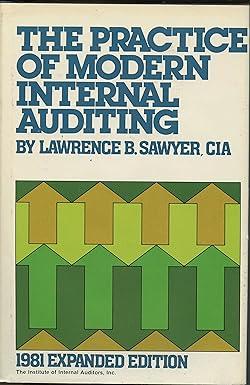Question
Stock-based Compensation Watkins Co. (WC) manages retail rental space in several locations across the US. WC went public in 2010 and had increases in stock
Stock-based Compensation Watkins Co. (WC) manages retail rental space in several locations across the US. WC went public in 2010 and had increases in stock price through 2012. WC decided to grant stock option awards to its executives to encourage retention. On January 1, 2013, WC granted 500 employee share options that cliff vest after a 4 year service period, with an exercise price of $20 per share. Using the Black-Scholes pricing model, WC determined that the fair value of the awards on the grant date was $10. On the grant date, WC stock was trading at $20 per share. On January 1, 2015, WC decided that it wanted to provide an additional incentive to retain key employees, and so WC modified the exercise price to $15 per share. Using the Black-Scholes pricing model, WC determined the fair value of the awards was $8 after modification and $7 immediately before the modification. No other terms of the stock option award were affected. Assume no forfeitures. Required: You do not need to use memo format. Answer the following six questions. 1. How much compensation cost should WC recognize in each year of the service period for the awards granted on January 1, 2013? 2. How would the accounting for these awards change if the modification was not made until January 1, 2018, after the awards were fully vested? Assume the same fair values before/after the modification; only a different date. Additional Case Facts Assume the same facts as described above, however, the terms of the award also include a performance condition in which the awards will only vest if cumulative net income over the 4 year service period is greater than $4 million. After losing several rental clients during the year, on December 31, 2014, WC projected that the cumulative net income over the 4 year service period would only be $3.5 million, and therefore, the performance condition had become improbable to achieve. 3. How would the Year 2 accounting change due to the performance condition becoming improbable of achievement on December 31, 2014? What would be the cumulative amount of compensation cost recognized? Additional Case Facts On December 31, 2015, it was still improbable that the $4 million performance condition would be met. WC was worried key executives would leave, and so management reduced the performance condition to $3 million cumulative net income over the 4 year service period. Using the Black-Scholes pricing model, WC determined the fair value of the awards was $8 upon modification. Actual cumulative net income over the 4 year period ended up being $3.2 million. 4. How much compensation costs should WC recognize in Year 3 and Year 4 if the December 31, 2015 modification resulted in the awards becoming probable of achievement? 5. How would the accounting for this modification differ under IFRSs? Additional Question 6. Describe the practical expedients regarding employee share-based payment accounting recently put in place for private companies as of March 2016. Hint: Look at ASU 2016-09.
Step by Step Solution
There are 3 Steps involved in it
Step: 1

Get Instant Access to Expert-Tailored Solutions
See step-by-step solutions with expert insights and AI powered tools for academic success
Step: 2

Step: 3

Ace Your Homework with AI
Get the answers you need in no time with our AI-driven, step-by-step assistance
Get Started


